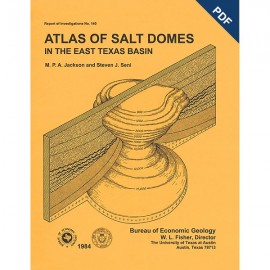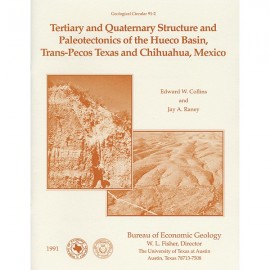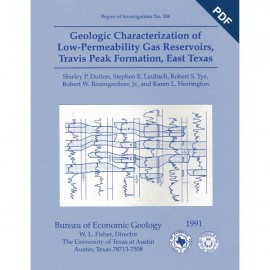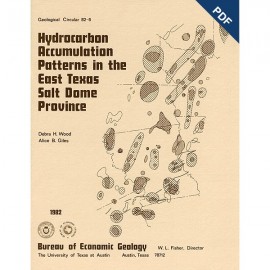Geological Circulars
-
Books & Reports
- Reports of Investigations
- Guidebooks
- Udden Series
- Geological Circulars
- Down To Earth
- Atlases of Major Oil and Gas Reservoirs
- Texas Memorial Museum Publications
- Environmental Geologic Atlas of the Texas Coastal Zone
- Mineral Resource Circulars
- Other Reports
- Seminars and Workshops
- Handbooks
- Submerged Lands of Texas
- Symposia
- Annual Reports
- Open File Reports
-
Maps & Cross Sections
- Thematic Maps
- Miscellaneous Maps, Charts & Sections
- Geologic Atlas of Texas
- STATEMAP Project Maps
- Geologic Quadrangle Maps
- Cross Sections
- Highway Geology Map
- Energy and Mineral Resource Maps
- Shoreline Change and Other Posters
- Wilcox Group, East Texas, Geological / Hydrological Folios
- Bouguer Gravity Atlas of Texas
- River Basin Regional Studies
- Featured Maps
- Posters
- Teachers & the Public
-
Geological Society Publications
- Gulf Coast Association of Geological Societies
- Alabama Geological Society
- Austin Geological Society
- Corpus Christi Geological Society
- Houston Geological Society
- Lafayette Geological Society
- Mississippi Geological Society
- New Orleans Geological Society
- South Texas Geological Society
- GCS SEPM Publications
- Historic BEG & UT Series
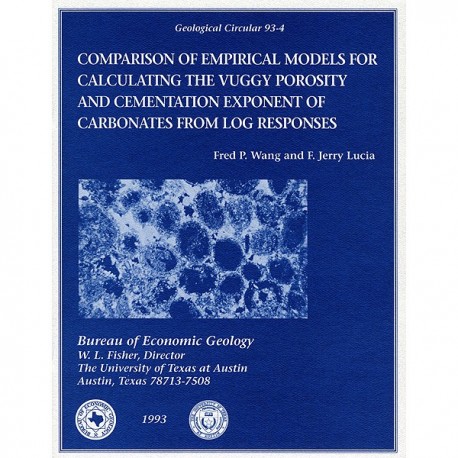
Comparison of Empirical Models for Calculating the Vuggy Porosity and Cementation Component of Carbonates from Log
GC9304
For a downloadable, digital version: GC9304D.
This product is no longer in stock
GC9304. Comparison of Empirical Models for Calculating the Vuggy Porosity and Cementation Component of Carbonates from Log Responses, by F. P. Wang and F. J. Lucia. 27 p., 17 figs., 1 table, 1 appendix, 1993. ISSN: 0082-3309.
To purchase this publication as a downloadable PDF, please order GC9304D.
ABSTRACT
Formation evaluation in heterogeneous carbonate reservoirs is complicated by the presence of multiple pore types. Acoustic properties, Archie cementation exponents, and permeability transforms differ according to pore type. This study evaluates the various models for estimating vuggy porosity and the Archie cementation exponent from wireline logs, illustrates the difficulty of log interpretation applied to complex pore types, and presents generalized models developed to resolve some discrepancies within various models. A comparison of the four existing models for calculating vuggy porosity from acoustic logs shows that vuggy porosities calculated by each model do not match. The quadratic and power-law models estimate separate-vug porosity more accurately than does either the Nurmi or the Secondary Porosity Index model. The Lucia model, based on the point-count-derived vuggy porosity and the response of acoustic logs, differs significantly from other models that are based solely on the response of acoustic logs. Six models for calculating the cementation exponent from acoustic and resistivity data are reviewed, and the Lucia and Myers models are tested against core data. A generalized dual-porosity model for estimating cementation exponents is developed from a review of the six models. This generalized dualporosity model can be used for calculating cementation exponents of carbonate rocks containing both separate and touching vugs.
Keywords: acoustic log, carbonate, cementation exponent, formation evaluation, log interpretation, touching vug, vuggy porosity
Citation
Wang, F. P., and Lucia, F. J., 1993, Comparison of Empirical Models for Calculating the Vuggy Porosity and Cementation Component of Carbonates from Log Responses: The University of Texas at Austin, Bureau of Economic Geology, Geological Circular 93-4, 27 p.

